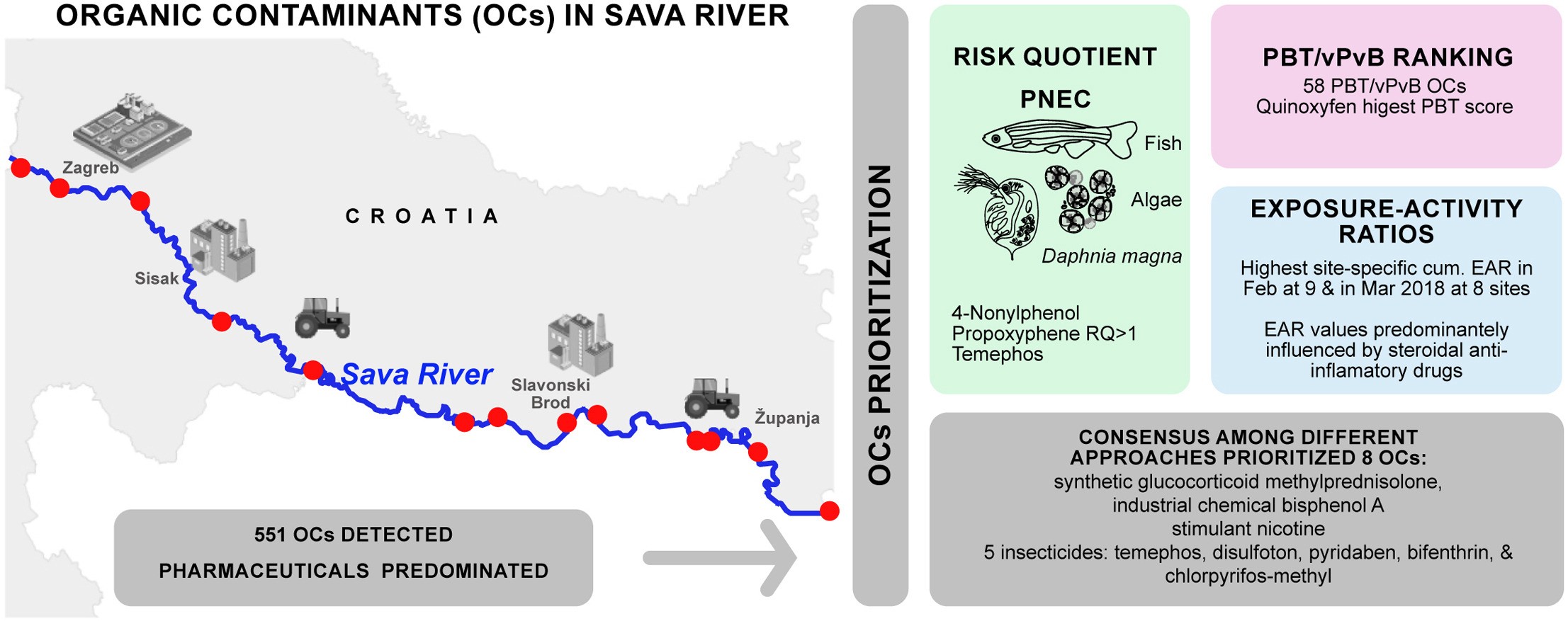New Scientific Publication in the journal Environmental Research


Years of exceptionally high-quality and successful collaboration between esteemed scientists and experts from Croatia and the United States have resulted in another scientific paper published in the prestigious journal Environmental Research by Elsevier. The paper, titled “Seasonal variability and risk evaluation of emerging organic contaminants in a European river: linking in silico and in vitro approaches to prioritize hazardous EOCs”, is the outcome of a collaboration between the Institute for Water “Josip Juraj Strossmayer,” the Department of Biology at the Faculty of Science, University of Zagreb, the Croatian Geological Institute, the Ruđer Bošković Institute, and the University of St. Thomas in the United States.
This study focuses on improving the prioritization of high-risk organic chemical substances and their mixtures in aquatic environments by combining chemical composition data with tools for assessing biological effects using in silico and in vitro approaches.
Modern societies heavily rely on vast quantities of chemical compounds for industrial, agricultural, and consumer purposes. With their increasing use, these compounds pose a growing risk to the environment and human health. In addition to legally regulated substances, many “new” compounds that are part of daily life and not yet subject to regular monitoring can become candidates for future regulation, depending on ecotoxicity assessments, toxicity studies, potential health impacts, public perception, and monitoring results in various environmental matrices.
This study applied an integrated risk assessment approach to 563 organic contaminants (including pharmaceuticals, illicit drugs, pesticides, industrial chemicals, hormones, artificial sweeteners, and ultraviolet (UV) filters) detected in water samples collected from 13 monitoring stations along the Sava River in Croatia. Water samples were collected between February and May 2018, covering winter and spring months. A total of 551 organic compounds were detected. The variations in composition and concentration of organic pollutants were analyzed at the Central Water Laboratory of the Institute for Water “Josip Juraj Strossmayer” using ultra-high-performance liquid chromatography coupled with a high-resolution quadrupole time-of-flight mass spectrometer (UHPLC-q-TOF-MS).
Environmental pollutants almost always coexist with other chemicals, and their toxic effects depend on the composition of the mixture, where interactions between substances can be potentiating, additive, antagonistic, or synergistic. To effectively use collected chemical data for environmental risk assessment, it is essential to measure or predict their biological effects.
By profiling persistent, bioaccumulative, and toxic (PBT) substances and calculating the risk quotient (RQ), pesticides and industrial chemicals were identified as the key contributors to biological effects, peaking in April due to increased agricultural activities. In vitro prioritization using exposure-activity ratios (EARs) derived from the ToxCast database revealed heightened biological effects during the colder months (February and March), attributed to elevated levels of pharmaceuticals, particularly synthetic glucocorticoids used for treating respiratory infections.
By integrating PBT, RQ, and EAR assessments, the study prioritized eight different organic substances belonging to the categories of synthetic glucocorticoids, industrial chemicals, stimulants, and pesticides. This innovative methodology provides crucial insights for early risk identification, more effective pollution management, the protection of aquatic ecosystems, and the preservation of human health.

